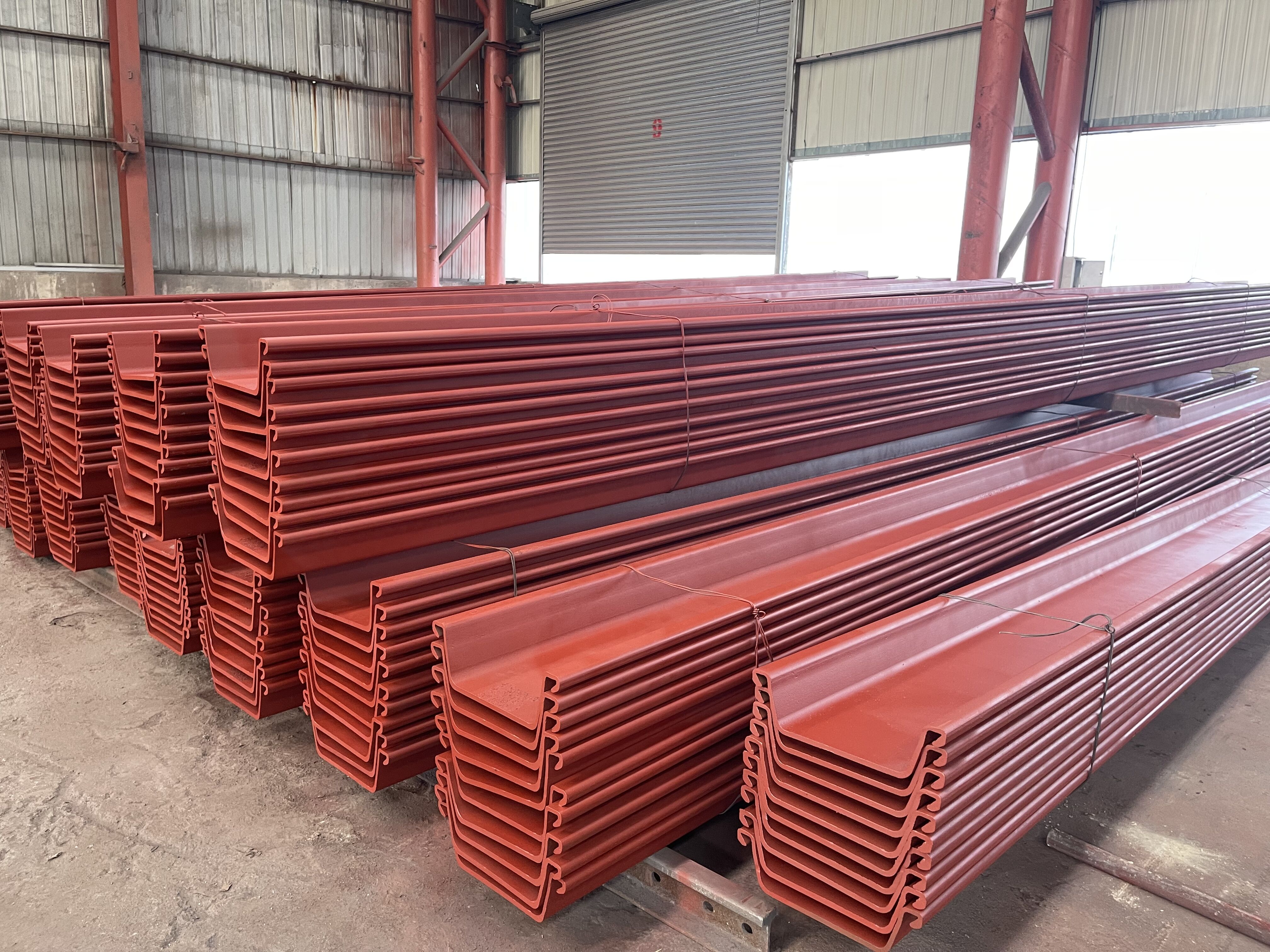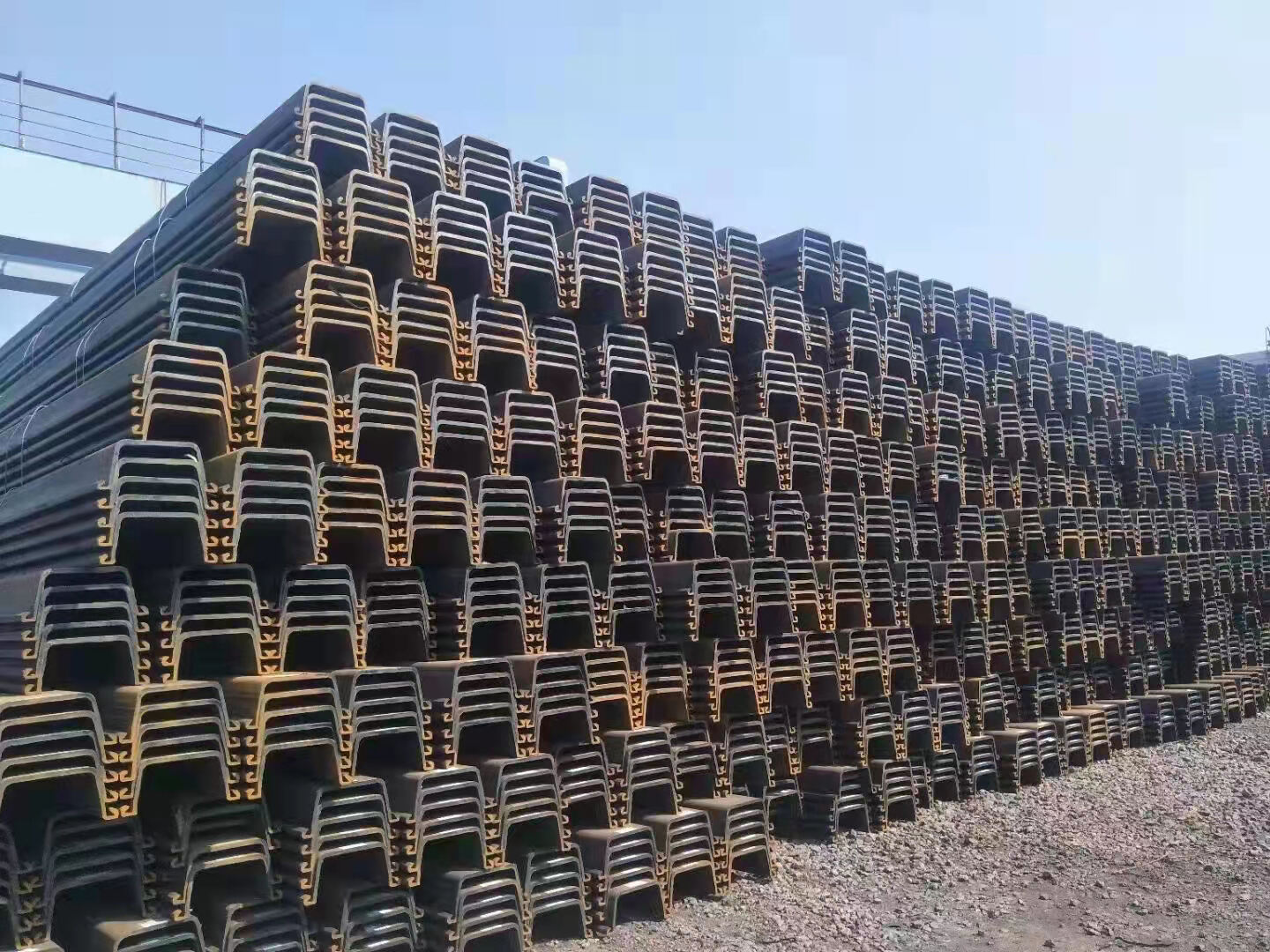1.Preparation before construction
①Geological survey and design verification
Investigate the geological conditions in detail (soil type, groundwater level, obstacles, etc.) to ensure that the pile length, thickness and lock design meet the bearing capacity requirements.
Verify the design drawings to confirm the pile specifications, pile driving depth and arrangement (such as single row, double row or grid structure).
②Material inspection
Check whether the size, thickness, lock integrity and anti-corrosion coating of the steel sheet pile meet the standards.
Ensure that the pile body is free of bending, cracks or rust, and the lock part is clean and free of debris.
③Equipment selection and commissioning
Select appropriate piling equipment (such as vibrating hammer, impact hammer or static pressure pile driver) according to the pile length, geological conditions and construction environment. Debug the equipment to ensure the accuracy and efficiency of piling.
④Site cleaning and measurement and layout
Clean the construction area, remove obstacles and level the site.
Measure and lay out according to the design drawings, mark the pile positions and pile driving sequence.

2. Precautions during the construction process
①Pile driving accuracy control
Use a guide frame or guide frame to ensure the verticality of the pile body, and the deviation is controlled within 1%.
Monitor the position of the pile body in real time during the pile driving process and adjust the equipment in time.
②Lock connection quality
Apply lubricant (such as butter or asphalt) to the lock part before piling to reduce friction resistance.
Ensure that the locks of adjacent piles are tightly engaged to avoid dislocation or disengagement.
③Pile driving sequence and rhythm
Pile according to the design sequence (such as pushing from one corner to another or expanding from the center to the surroundings) to avoid pile deviation due to soil compression.
Control the pile driving speed to avoid deformation of the pile body or damage to the lock.
④Special geological treatment
In hard soil or rocky areas, you can drill holes first and then pile to avoid damage to the pile tip.
In soft soil areas, strengthen monitoring to prevent the pile body from sinking too fast or tilting.
⑤Water-stopping measures
After the pile driving is completed, fill the lock gap with water-stopping materials (such as bentonite or special sealant) immediately.
For projects with high water-stopping requirements, an anti-seepage membrane or grouting reinforcement can be laid behind the pile.

3.Post-construction inspection and maintenance
①Pile quality acceptance
Check whether the verticality of the pile, the lock bite and the overall linearity meet the design requirements.
Use ultrasonic or flaw detectors to detect the internal quality of the pile to ensure that there are no cracks or defects.
②Foundation pit excavation and support
Excavate the foundation pit in layers to avoid lateral displacement of the pile due to excessive excavation at one time.
Install supports or anchors on the top of the pile to enhance overall stability.
③Long-term monitoring and maintenance
For permanent projects, regularly monitor the displacement, settlement and corrosion of the pile.
Repair the damaged parts of the coating in time to extend the service life of the pile.